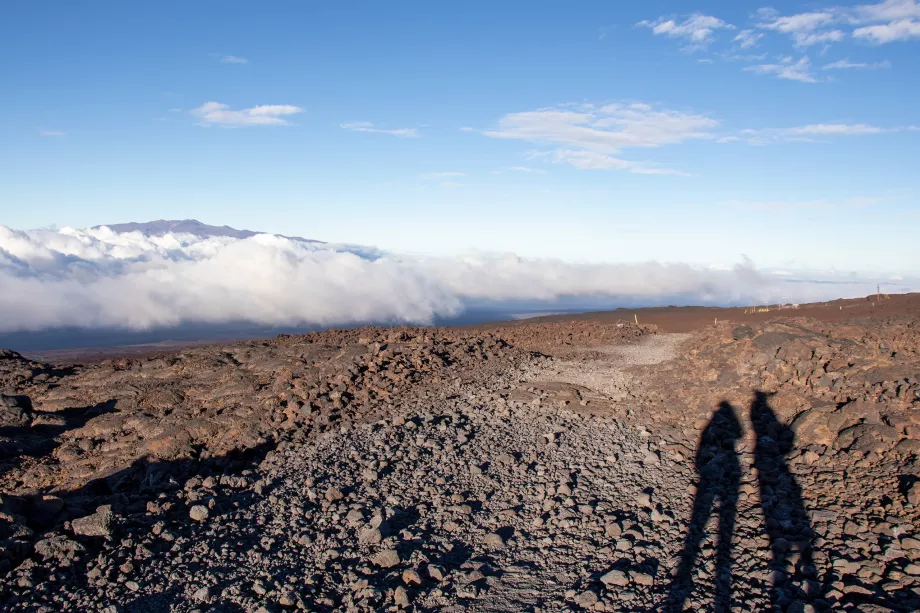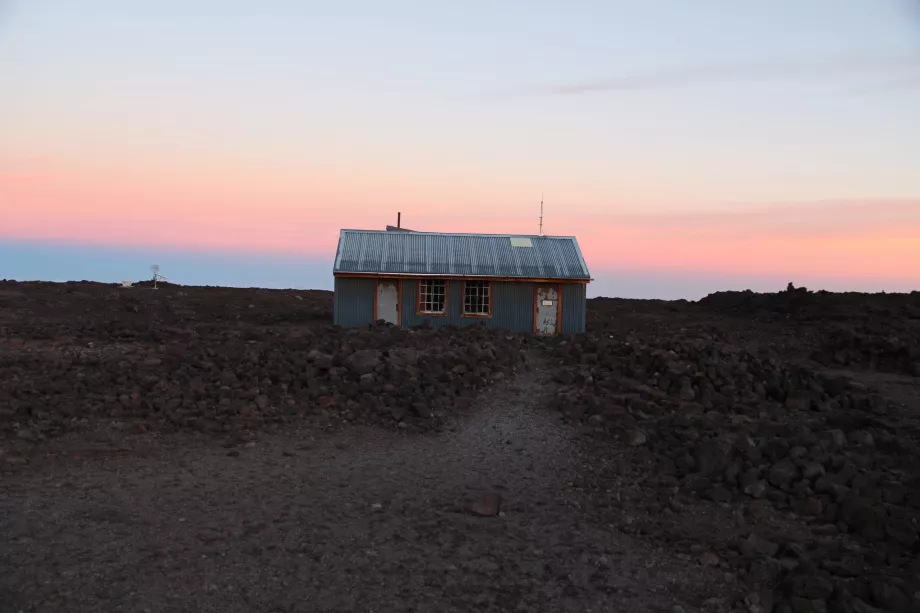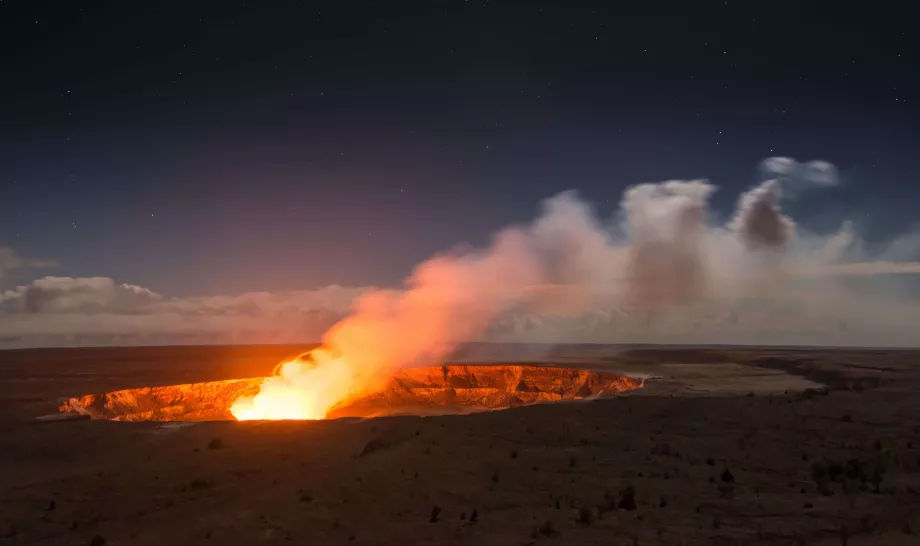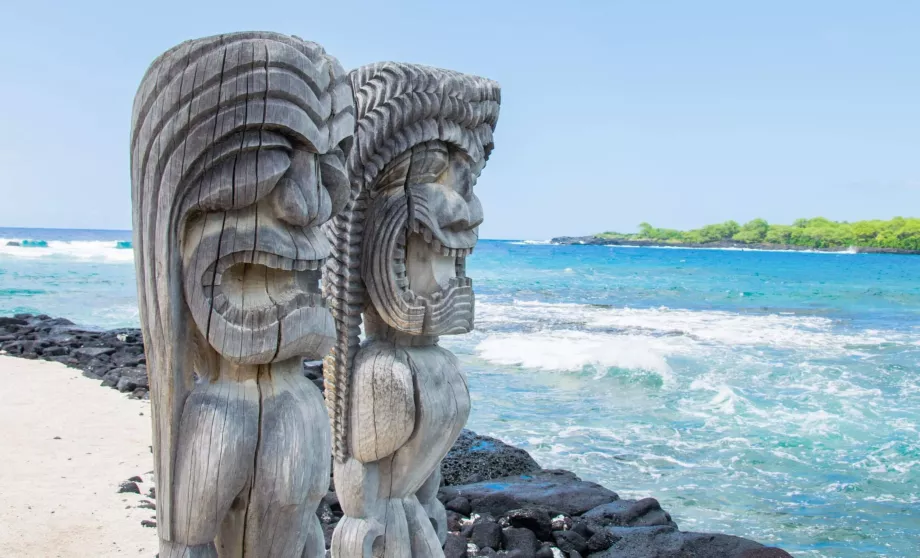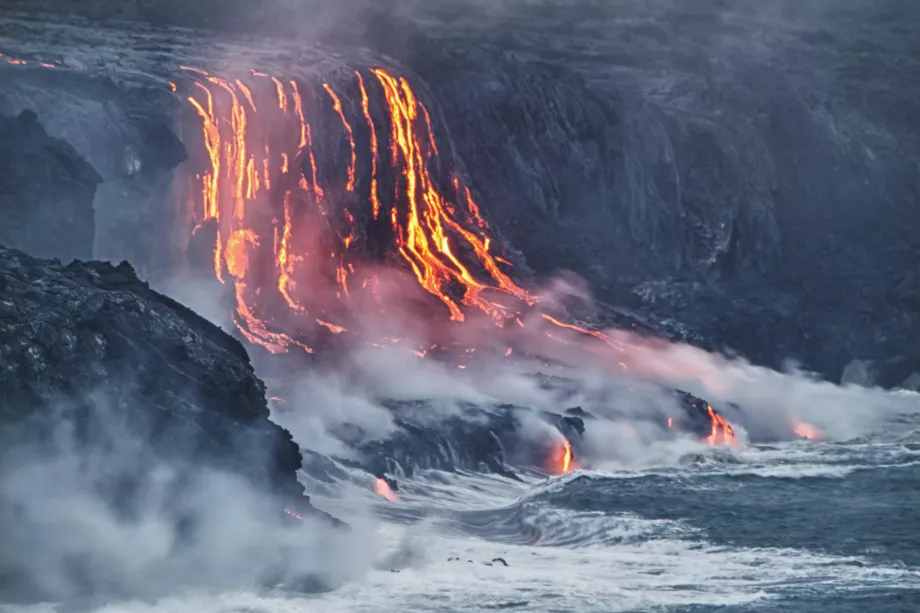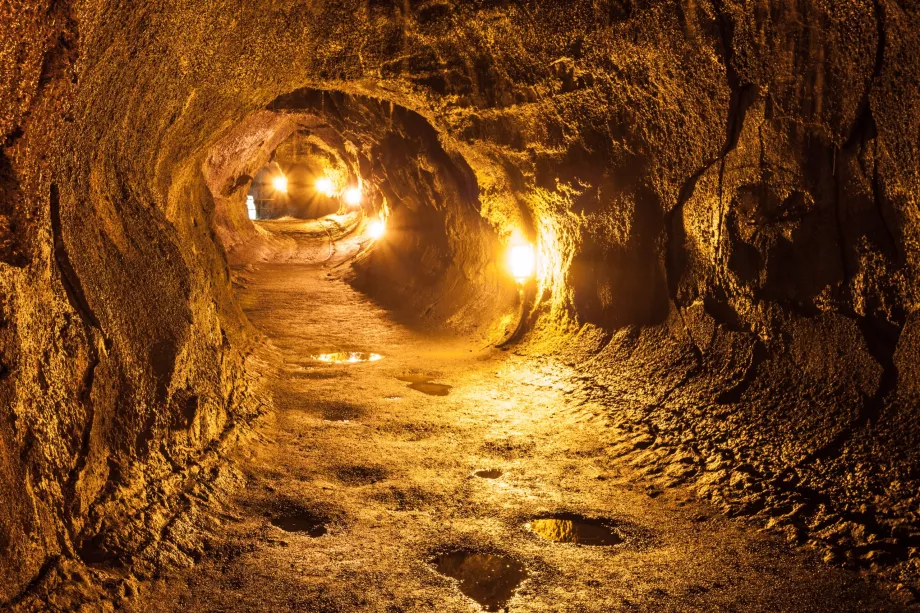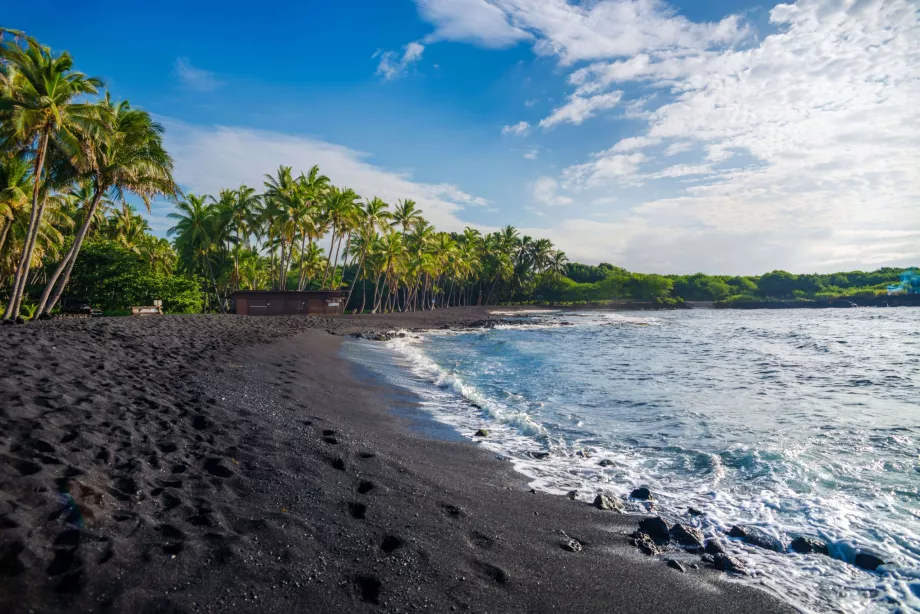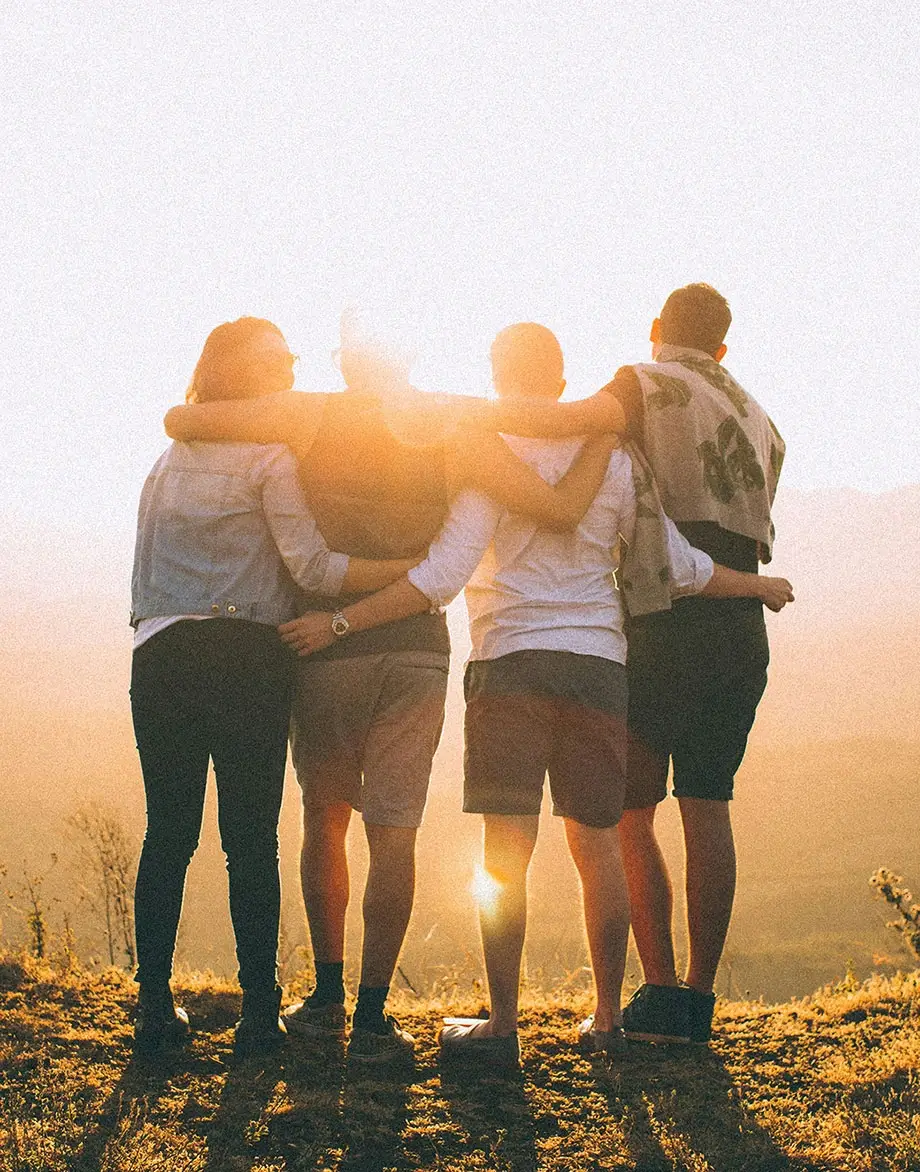Mauna Loa

Its 38-metre lower, but significantly more massive counterpart , Mauna Key, rises up just a few kilometres away. Mauna Loa occupies more than half of the island's surface area, and it too is a volcano, currently dormant.
It is so massive and wide that from a distance it looks like a slight hill, and one would hardly guess that it rises 4,169 metres above sea level.
Cheapest accommodation on the Big Island
Mauna Loa is not as well known as neighbouring Mauna Kea, partly because of its height and partly because the road doesn't go all the way to the top. On the other hand, it presents an ideal opportunity for multi-day trekkers.
The roads are signposted, starting either at the observatories, which can be reached by car, or from the Saddle Road area, the road connecting Hilo and Kona, or from the eastern side in the direction of the Kilauea volcano.
The ascent of Mauna Loa
The summit can only be reached on foot, and it is reached by two official trails. Keep in mind that only physically fit individuals can make the climb, even though one of the routes is less demanding, expect high elevation gain, a full day without shade, and especially the threat of altitude sickness.
The air at 4,000 metres is already considerably thinner than at the sea, where you will be starting from, so don't underestimate this fact.
For example, an acclimatisation trip by car the day before to the neighbouring Mauna Kea and a longer stay (at least a few hours) at around 2,500 metres is ideal.
Count on the fact that only extra-trained travelers can make the journey to the summit in one day, and especially for the second option of the climb, an overnight stay will be a must.
1. Mauna Loa Observatory - Summit
The first shorter route will have you climbing over 10 km and descending an identical route for the same length. You will drive up the asphalt road to the observatories at 3,390 metres, where you will leave your car on a small concrete patch that serves as free public parking.
From here, a trail called the Observatory Trail leads through a lunar landscape of rough, solidified lava that will take you to the top. First, you'll reach the Summit Cabin, a small, one-room tourist hostel with bunk beds that's just a few hundred metres from the breathtaking crater filled with black, solid lava.
- Total of 20 km (round trip)
- Altitude approx. 800 metres
- Time: approx. 3.5 hours up and 2.5 hours down for trained athletes
- Route map
The observatories can be reached by taking the road that turns off Saddle Road connecting Hilo and Kona.
2. Mana Loa Lookout - Summit
The second route is considerably longer but takes you through a slightly more varied landscape. It begins at Mauna Loa Lookout on the hillside, which is reached by a narrow asphalt road winding up the 18 km of Highway 11 (beginning near the entrance to Volcanoes National Park).
From the small parking area, the road first passes through sparse vegetation to reach a landscape of red volcanic soil with occasional volcanic cones. Halfway along the trail, you'll encounter the largest one called Red Hill (Puʻuʻulaʻula), where there is a small hiker's cabin with bunkhouses.
From this point, you'll climb steeply up the black lava fields to the Summit Cabin. The trail is marked the whole way by occasional cairns of rocks, is well trodden, and no climbing skills are required.
- 58 km total (round trip and return combined)
- Approx. 2,000 m elevation gain
- Time: approx. 11 hours up and 7.5 hours down for trained athletes
- Route map
Fees and entry reservation
Mauna Loa is part of the Volcanoes National Park, so you must have paid for entrance to the NP to get to the summit.
The fee must be paid at the entrance to the national park near Kilauea Volcano, even if you choose the easier exit from the observatories, which are on the other side of Hilo from the main park gate. Online tickets can be purchased at nps.gov/planyourvisit/fees.
Prices are as follows:
- 30 usd for one car (regardless of the number of passengers) for 7 days (any number of entries) - if you make the trip from the observatories and do not want to visit Volcanoes National Park as well, this ticket is not worth it and you can just walk, because in this case you will not enter the national park by car at all
- 15 usd for pedestrians (if you take a longer route, a car ticket is required as you are already driving through the national park to the starting point)
- 55 usd Year-round admission for 3 national parks in Hawaii (in addition to Volcanoes, Haleakala on Maui and Pu'uhonua o Hōnaunau National Historical Park on the west coast of the Big Island)
- current fees on the official website
In addition to these tickets, online reservations are required for the so-called Backcountry Trails, which include both of the Mauna Loa trails. The fee is 10 usd and can only be paid online through the official National Park website. Valid for up to 10 people for a total of 7 days.
Accommodations along the way
There is room for a total of 28 hikers in the Summit Cabin and 24 hikers in the Red Hill Cabin.
Bunk beds with foam mattresses are available and you will not pay anything extra for this accommodation apart from the above mentioned fees. There is a dry toilet and rainwater tanks.
Be prepared for your trip
Expect no source of drinking water or snacks along the way and be equipped with plenty!
The fact of high altitude and high elevation should also be taken into account. Untrained hikers and travelers with no experience with altitude should definitely not venture onto Mauna Lou.
Last but not least, count on strong sunshine, but also rapid weather changes and trekking in thick clouds with reduced visibility.
You will be rewarded with the experience of a lifetime of travelling through exotic volcanic landscapes, pushing yourself to the limit and staying in absolutely unspoilt nature completely away from civilisation.
What to see around
Discover all the places to see in Big Island.
Any questions left?
If you have any questions or comments about the article...

